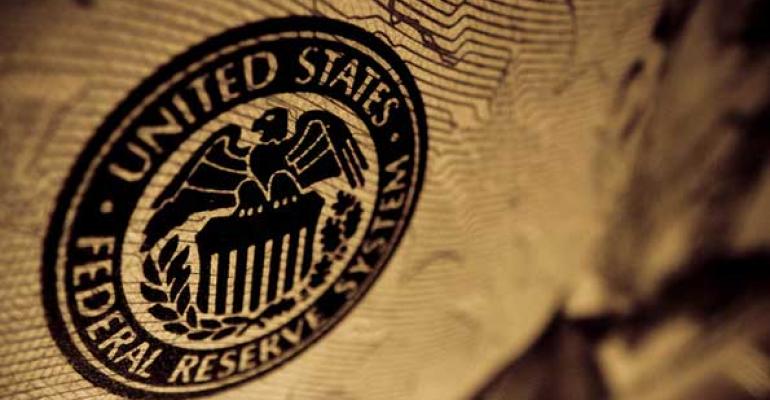(Bloomberg) -- As the pullback in Federal Reserve monetary support draws inexorably closer, investors are striving to taper-proof their portfolios with 2013’s volatility still fresh in their minds.
Eight years ago this month, global yields jumped and risky assets fell on a hint from then-Fed Chairman Ben Bernanke that the central bank might start trimming its crisis-era bond program. Wary of a repeat volatility spike some fund managers are turning to lower-duration high-yield debt for shelter, while others see a tantrum-less taper and are betting on emerging market assets to prevail.
With economists expecting the central bank to begin paring asset purchases by the end of this year, Fed officials are sticking to the script that it’s too early to discuss any shift in pandemic policy setting. But moves by counterparts in the U.K. and Canada to slow the pace of bond buying as their economies improve have reminded traders that the Fed cannot avoid the taper forever, especially as U.S. growth surges.
“The biggest threat to the market is rates volatility jumping higher, like we saw at the end of February,” said Pilar Gomez-Bravo, investment officer and director of fixed income at MFS Investment Management in London. “The valuations of risky assets are high, so you don’t have a lot of room for complacency.”
Gomez-Bravo favors junk bonds as an asset class less vulnerable to a reset in yields than their investment-grade peers, which have much higher duration or sensitivity to interest rates. Leveraged loans are an even better choice and some “stressed” debt securities should be less correlated to broader market repricings, according to Jefferies Financial Group Inc. credit strategist Sherif Hamid.
Investment-grade bonds are already under pressure with the largest exchange-traded fund for high-grade credit experiencing its longest stretch of outflows since 2013, according to data compiled by Bloomberg.
Taper Template
Bonds took the brunt of the 2013 turmoil, with Treasury yields jumping 50 basis points in the month after Bernanke spoke. Over the same period the MSCI Emerging Markets Index slumped 14% and the Nasdaq 100 fell 4%. However, the tech-heavy gauge now trades on 26 times forward earnings, compared to just 15 times then.
This time around, BlackRock Inc. -- the world’s largest asset manager -- suggests that much of the move in the bond market may have already taken place, and emerging market assets should hold up much better.
“We still think yields can move somewhat higher but tactically we think the big repricing of the activity restart is now mostly done,” said Ben Powell, chief Asia Pacific investment strategist for the BlackRock Investment Institute.
The 10-year Treasury yield is up about 65 basis points this year and traded around 1.57% on Friday. The Bloomberg Barclays U.S. Treasury Total Return Index is down over 3% year-to-date.
According to BlackRock, the combination of an economic recovery, heavy stimulus and a broadly stable dollar should be enough to spare risk assets -- including those from developing countries -- much of the impact of a gradual easing of central bank support.
The firm is overweight both developed- and emerging-market equities, “and on the fixed-income side we actually upgraded EM local currency debt last week,” Powell said.
Jackson Hole
Gauges of implied volatility in currencies, Treasuries and U.S. equities have retreated after a modest rise at the end of February suggesting investors don’t see an immediate risk of a Fed taper announcement. But trader activity in the options market points to Jackson Hole -- the annual gathering of central bankers in August -- as a likely candidate for taper talk to begin.
Meanwhile, investors should parse minutes of Federal Open Market Committee meetings where past experience suggests discussions of tapering will appear first, according to Win Thin, Brown Brothers Harriman & Co.’s global head of currency strategy. Minutes for the April meeting will be released on May 19.
“Suffice to say that Chair Powell will take great pains not to surprise the markets with a decision to taper,” Thin wrote Thursday. “Rather, it will be well-telegraphed and the minutes are the first place markets should look.”





